Making rawhide isn't fun
We are no longer building saddle trees, but we have two videos about how Western saddles fit horses available on our westernsaddlefit.com website.
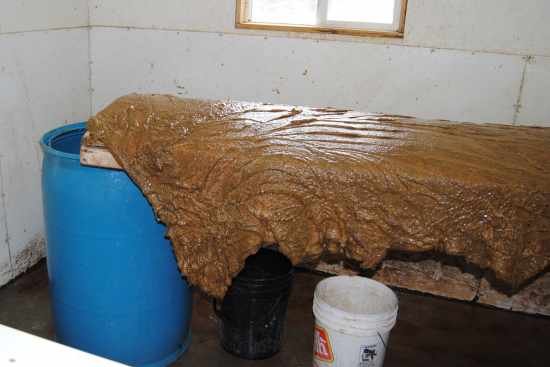
especially when confined in a small space inside the shop. But that was the biggest of the jobs for today.
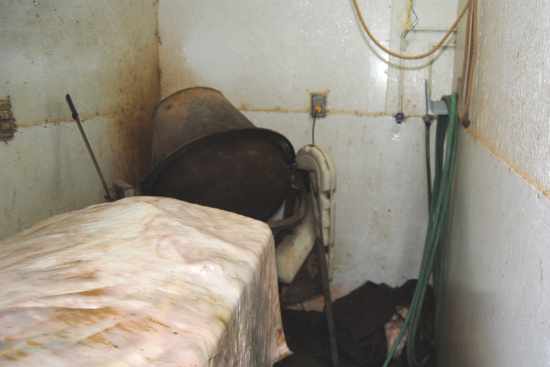
To start with, the hide, warm water and chemical are added to the cement mixer in the corner and it tumbles everything around, and around, and around ad nauseum. (And with the smell in there at times, that is pretty close to what it is!) We have plastic sheeting on the walls, a floor drain and lots of caulking to keep the walls from rotting with all the water being used in here.
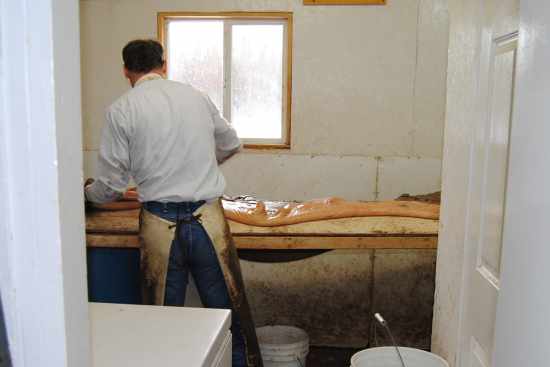
When the hair has been turned to sludge, Rod pulls the hide out and drapes it over his fleshing pole hair side up. That side gets hosed off and cleaned up before the hide is flipped over with the flesh side up. The fleshing pole isn't really a pole. It is close to 3 feet wide and slightly curved. If it is warm enough, Rod opens the window to get more fresh air in the room. It wasn't warm enough today.
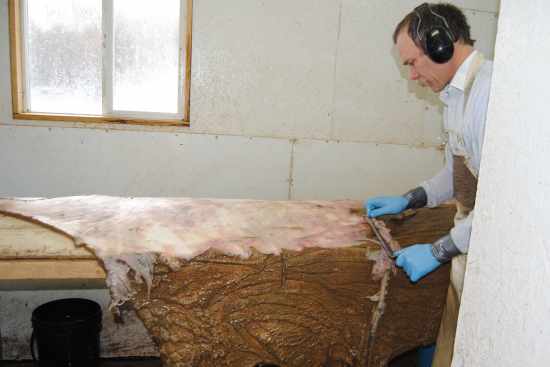
Then he uses a drawknife to do the time consuming job of fleshing the hide. The cement mixer is really loud and the confined space makes it extremely loud, so Rod wears hearing protection while he is in there. (I keep telling him I don’t want to yell at him when he is old!) If there is another hide tumbling in chemical while he is doing this, he wears a mask with chemical cartridge filters as well.
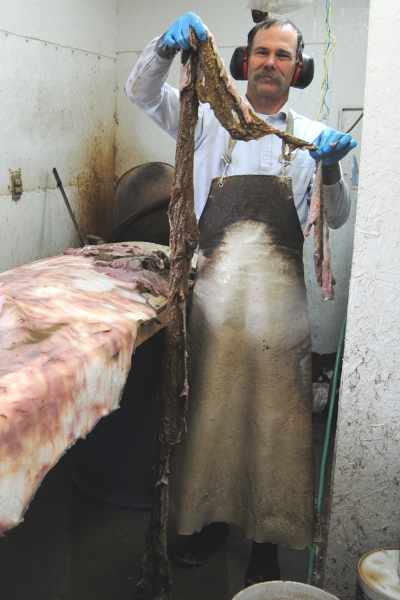
Since this is such an exciting and intellectually stimulating job (NOT!), Rod keeps himself amused by doing things like seeing how long a string of gunk (technical language there) he can keep intact before it breaks or ends.
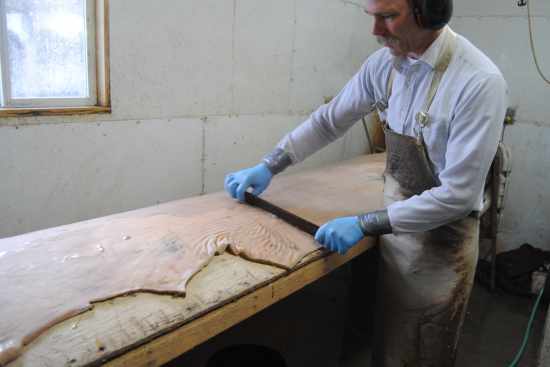
Once the flesh is off, the hide is flipped again and scudded. This involves running a flat sided object – a scudding knife would be nice but the smoothed edge of a horse shoeing rasp works too – over the hair side of the hide to remove particles of hair and goop (more technical language) from the hair follicles and other skin structures.
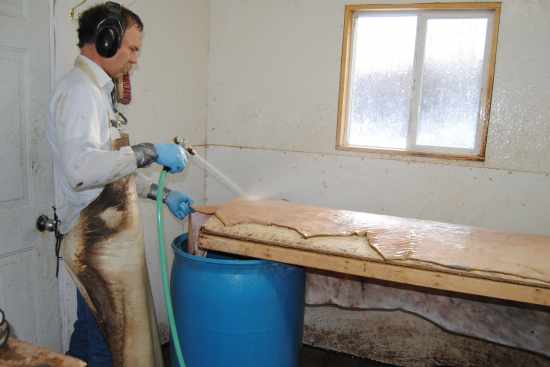
A final hose, and the hide is ready to go back into a barrel to await rinsing. Rinsing entails going back into the cement mixer, this time with constantly running water, for an hour at least. The hides then go back into barrels with some soap for the first night. The water gets changed twice a day until it stays clean. And that makes rawhide!!
Laundry comes later, and that is my "dirty job"…
